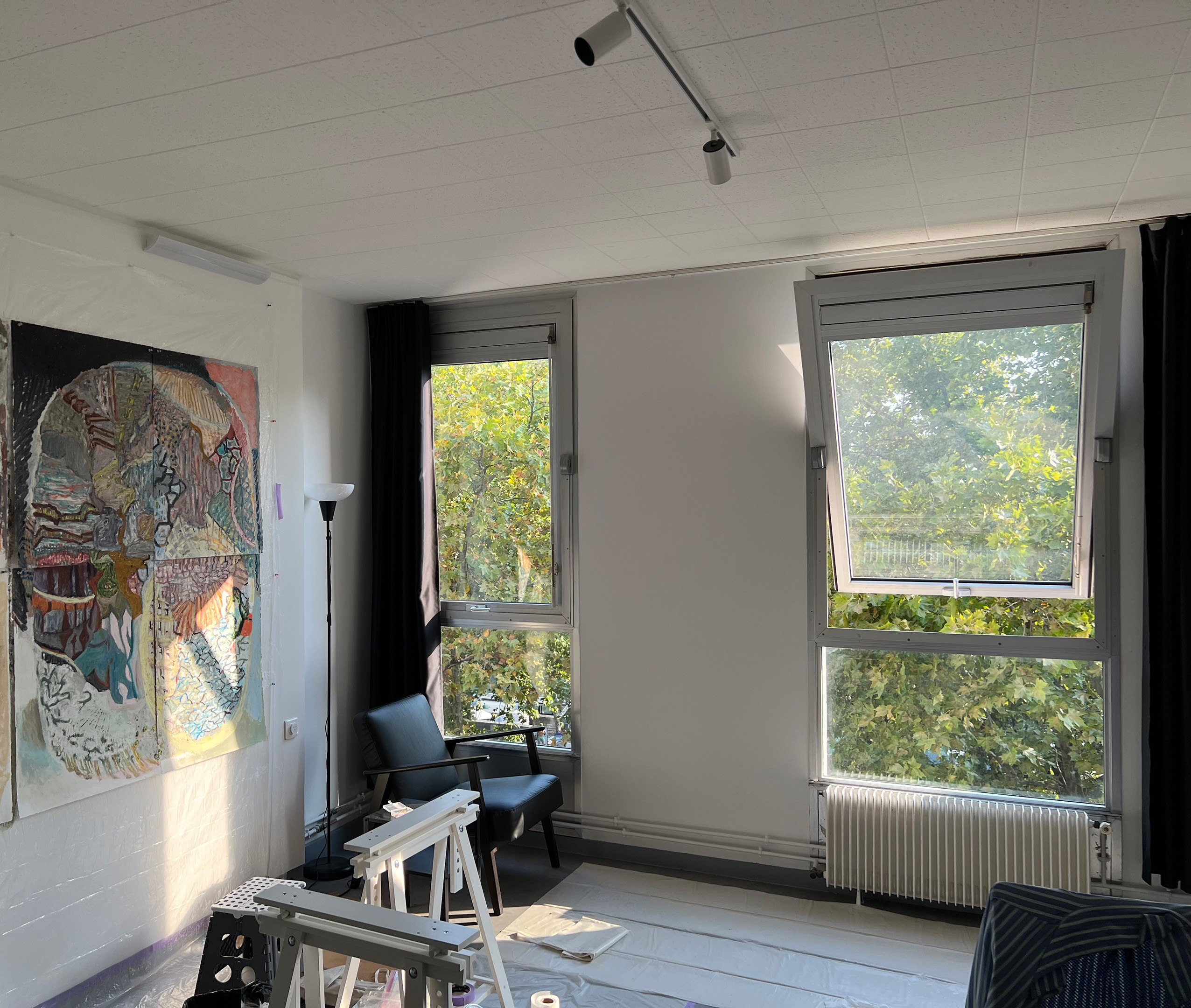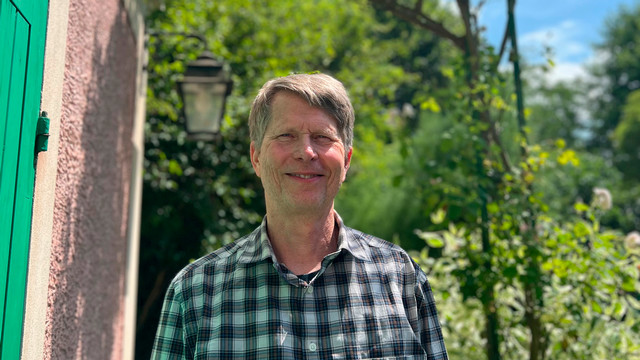Richmond faculty member takes a trip to Paris for inspiration
Research & Innovation
Erling Sjovold’s third-floor studio apartment in Paris was small, clean, and organized, with a view facing the Seine. “It is an apartment in which you can make art,” he said.
The art professor stayed at the Cité internationale des arts from early July to the end of August, as one of 300 international visual artists and writers — all residency participants. His trip and art materials were funded by the School of Arts & Sciences.
“I tried to treat every day like the gift it was,” he said. “I made good use of my time by balancing dedicated studio work with visiting sites, talking with artists, and wandering.”
The studio didn’t have air conditioning, so he kept his windows open all day, which connected him more with his natural surroundings. He spent hours each day walking around the city, immersed in its vibrancy and taking photographs that often inspired him later.
“Studio work evolved into a productive rhythm from which all else flowed more enjoyably. I enjoyed frequent grocery shopping to routinely get into the movement and texture of the city, refresh my senses, and buy incredible baguettes and properly ripe apricots,” Sjovold said.
He bought many of his paints and other art supplies from historic stores Charvin and Sennelier, which once supplied paints and pastels to Cezanne, Gauguin, Picasso, and van Gogh.
Residencies in earthy places
He is working on a long-term project consisting of three related bodies of work titled “Grounds,” “Aquifers,” and “Skies.”
These pieces explore unique geographies and earth systems, such as the volcanic pumice, glacial, and moss-covered terrain of Iceland, the high desert salt pans and bathtub rings of ancient Lake Bonneville at Wendover’s site of the Great Basin, and the desert ecology of creosote and granite boulders in the lower Mojave’s Sweeney Mountains — some of the locations of his previous work residencies.
“My subjects concern questions of what’s visible and invisible in nature, such as the air in the skies, the silent communication of plants, and the hidden caverns of aquifers,” he said.
The city as a muse
In Paris, medieval art and the space of the Cluny Museum, with its ancient stone walls that made him feel as if he were inside a rock, inspired his work.
He marveled at the Catacombs, where 6 million human remains are packed into repurposed limestone quarries. “I expect the Catacombs experience to influence me going forward,” he said.
Nature’s porosity and its deep connection with time are also subjects of his project, which has led him to explore new artists, places, and perspectives. “It makes me feel very alive and present,” he said.
Sjovold said the Paris experience was rich with exhibitions to reflect on and content to share with his students, including the Art Brut show at the Grand Palais, and exhibitions from Vivian Suter at Palais de Tokyo and Wolfgang Tillmans at the Pompidou Center.

Erling Sjovold’s studio in Paris, with one of his works in progress on the wall.
Sjovold enjoyed meeting artists from around the world and conversing with them during walks, at the residency workshops, and at Wednesday night open studios.
“I got significant work done and saw a lot of great art,” Sjovold said. “The opportunity for dedicated focus and time making art, researching, or visiting sites on one’s own schedule is the ideal environment.”
His hope is that the trip will serve as an example to his students of how important it is to explore, encounter, and research. He encourages them to go off campus, whether into the city or into nature.
“Art is not born in a vacuum. It’s about exposure, intention and looking.”

